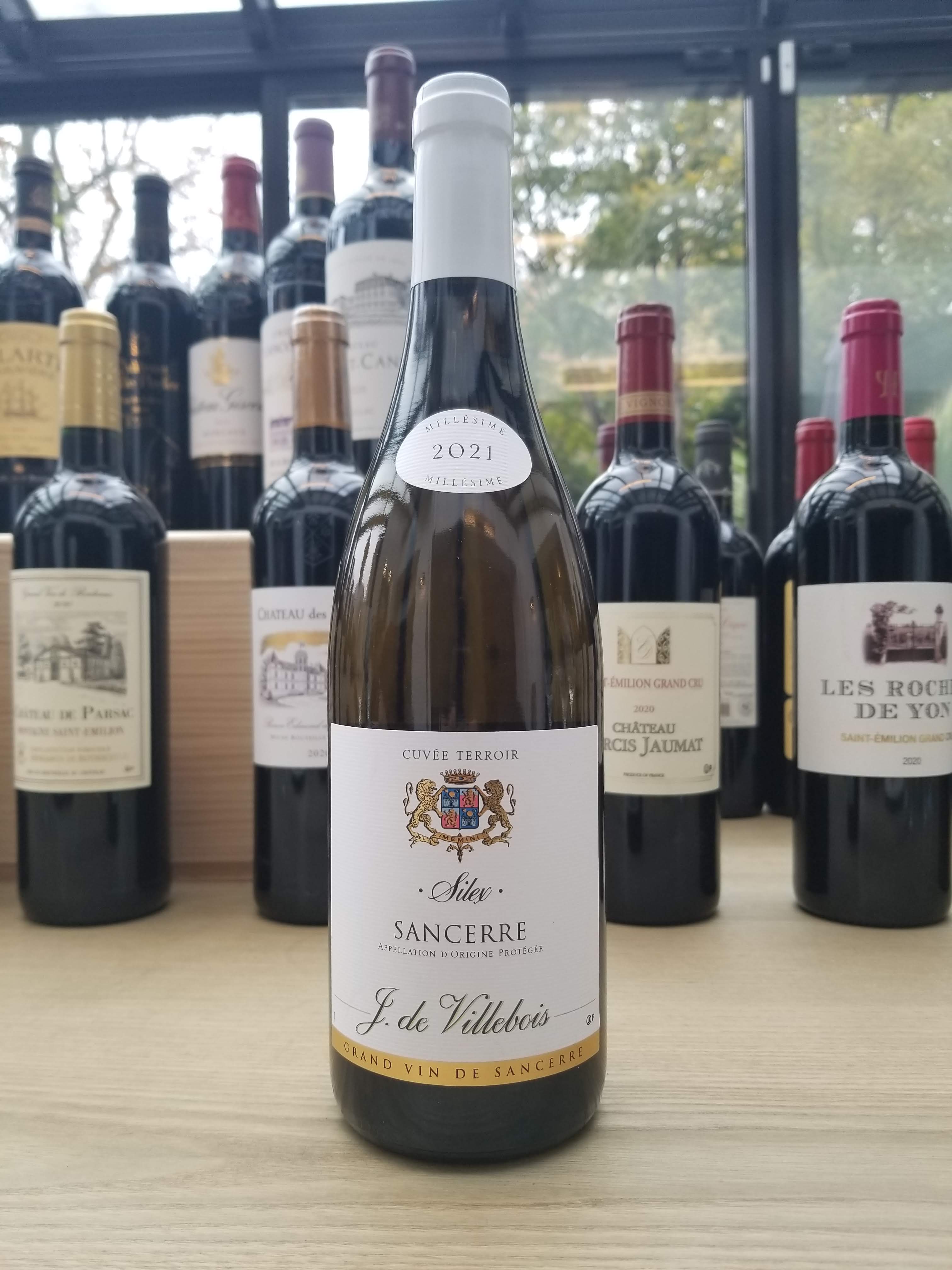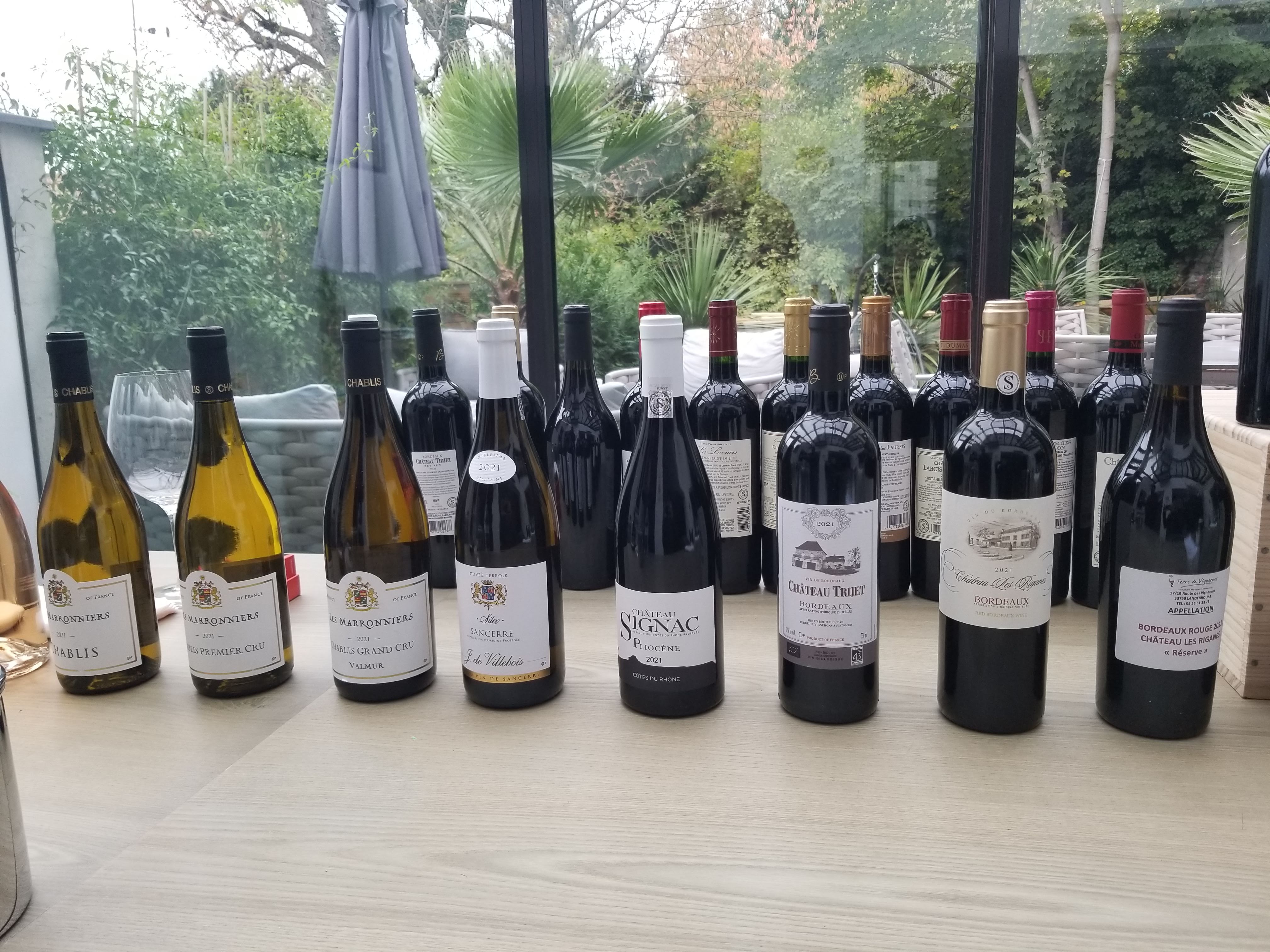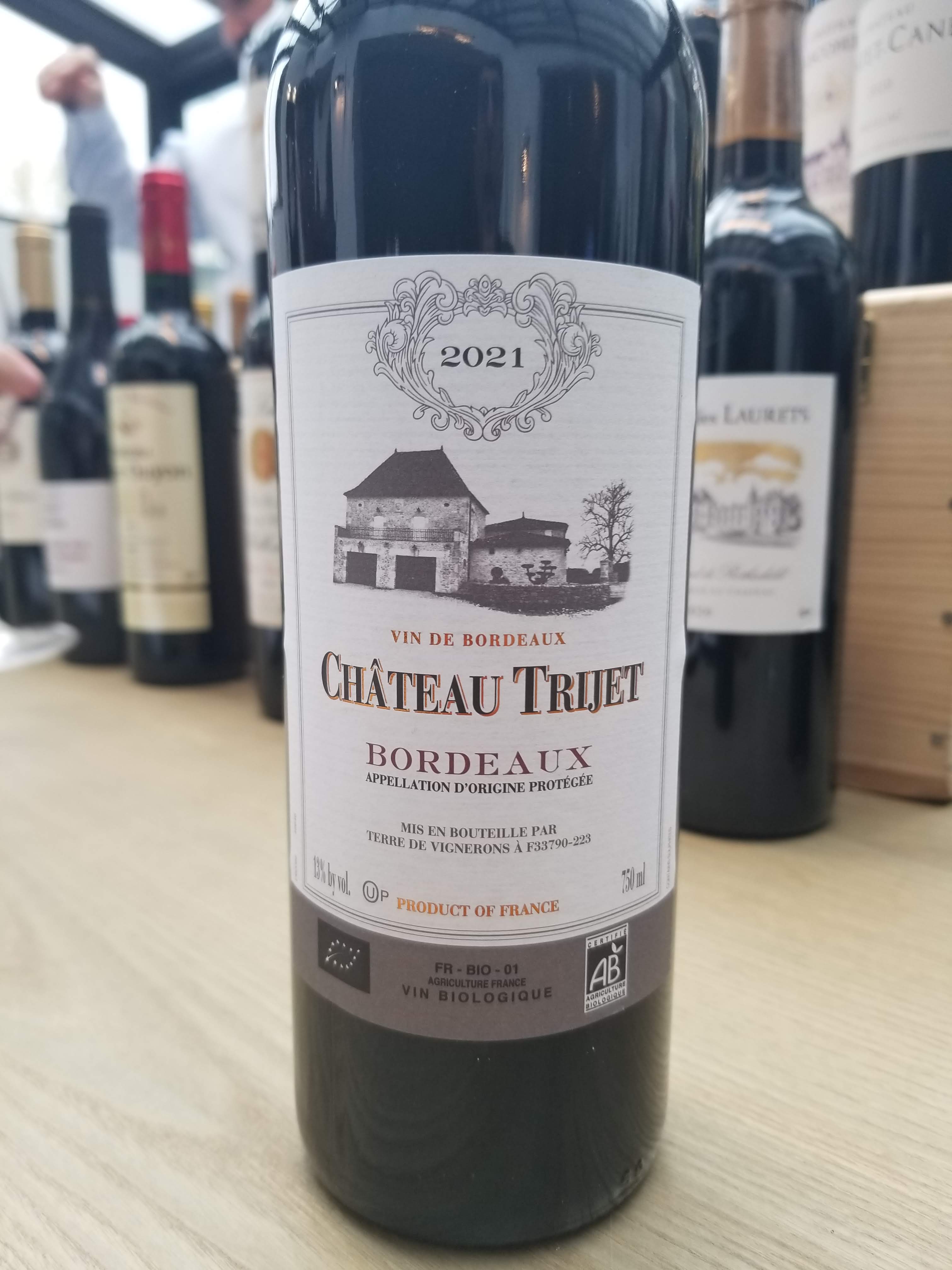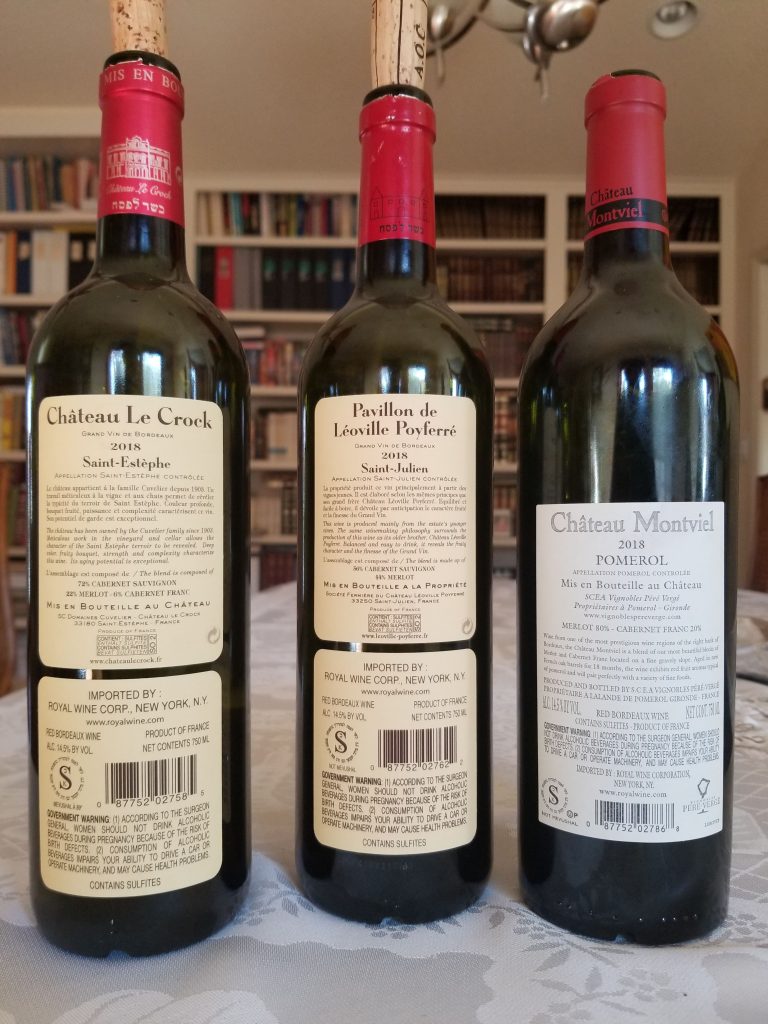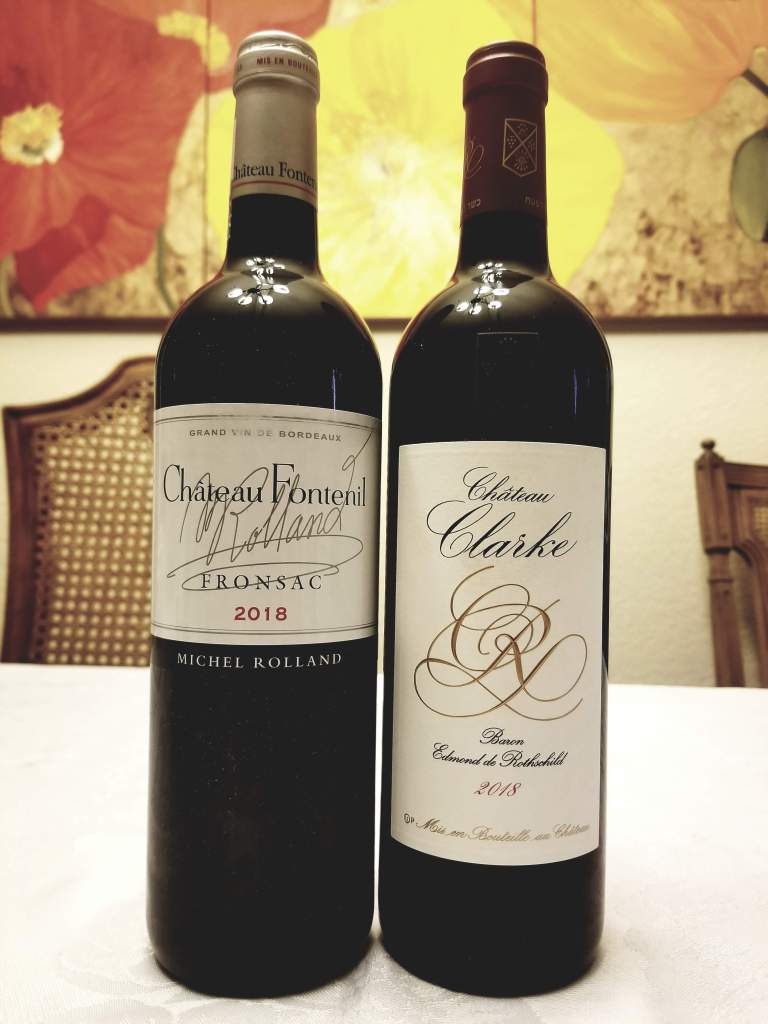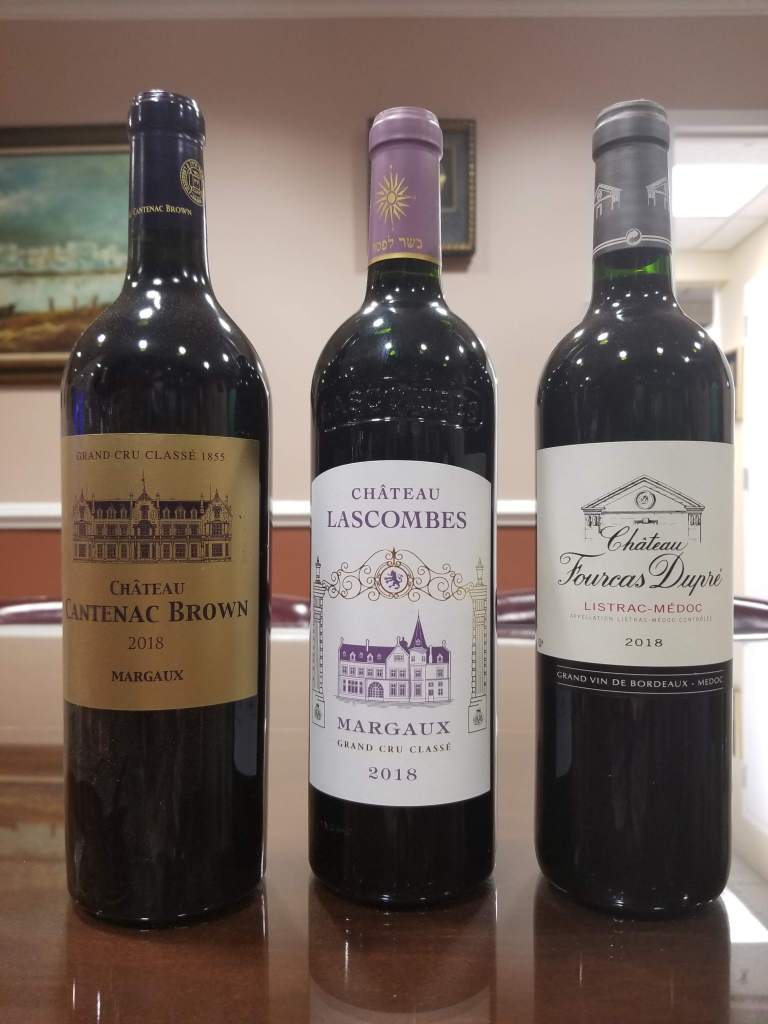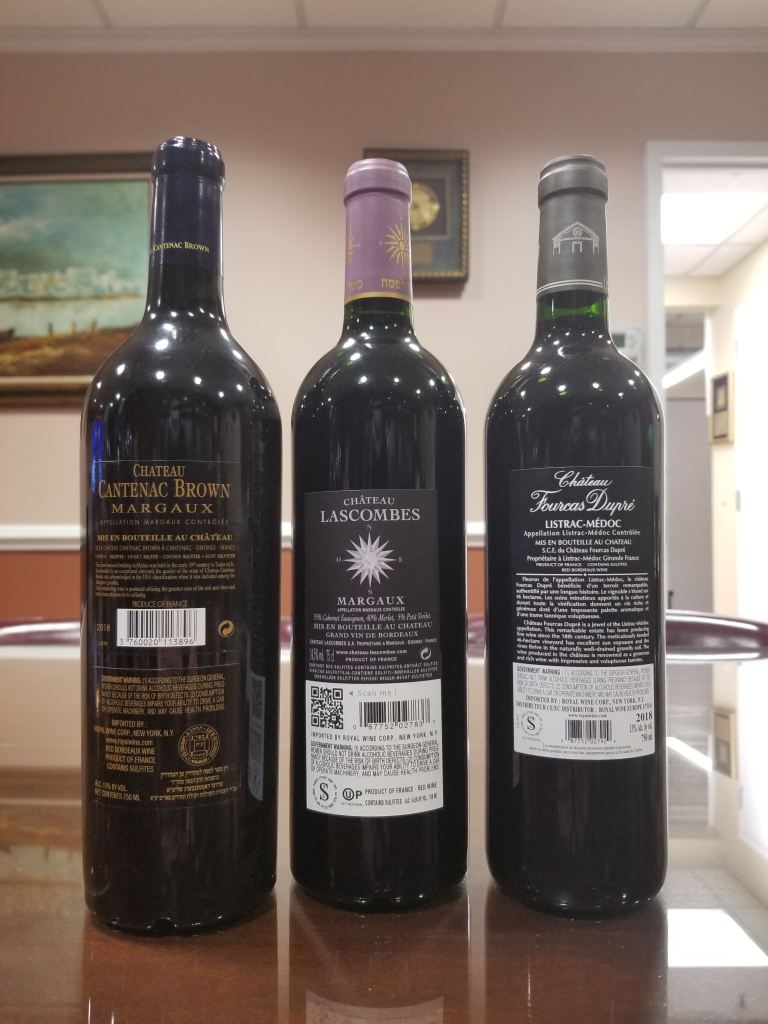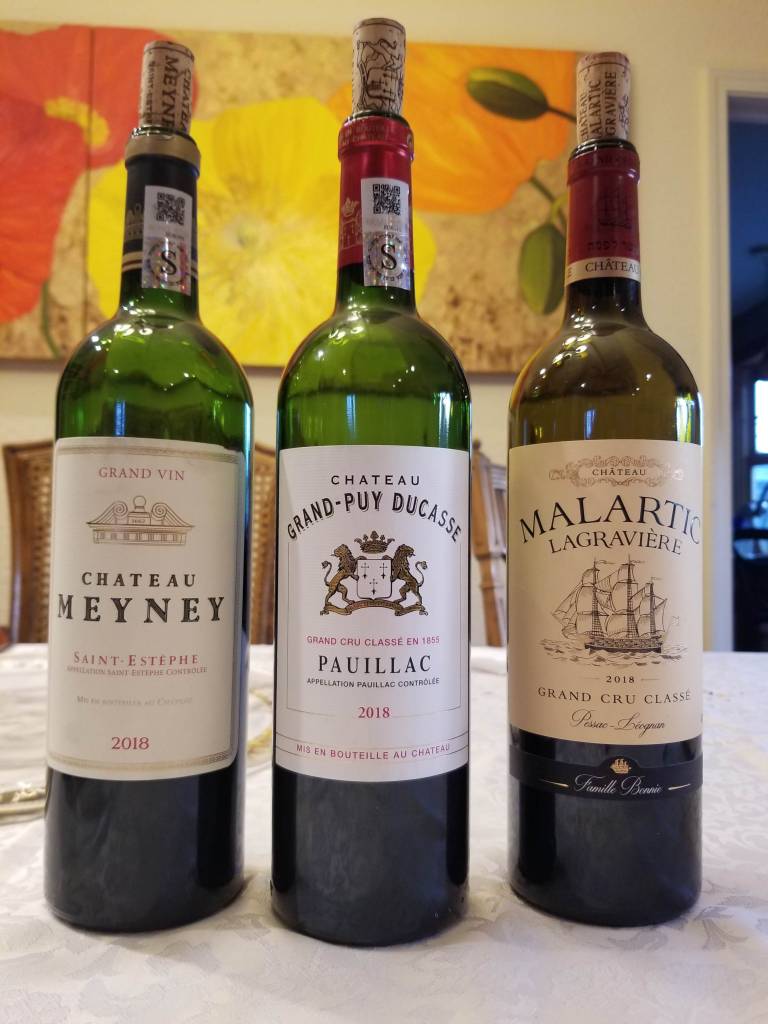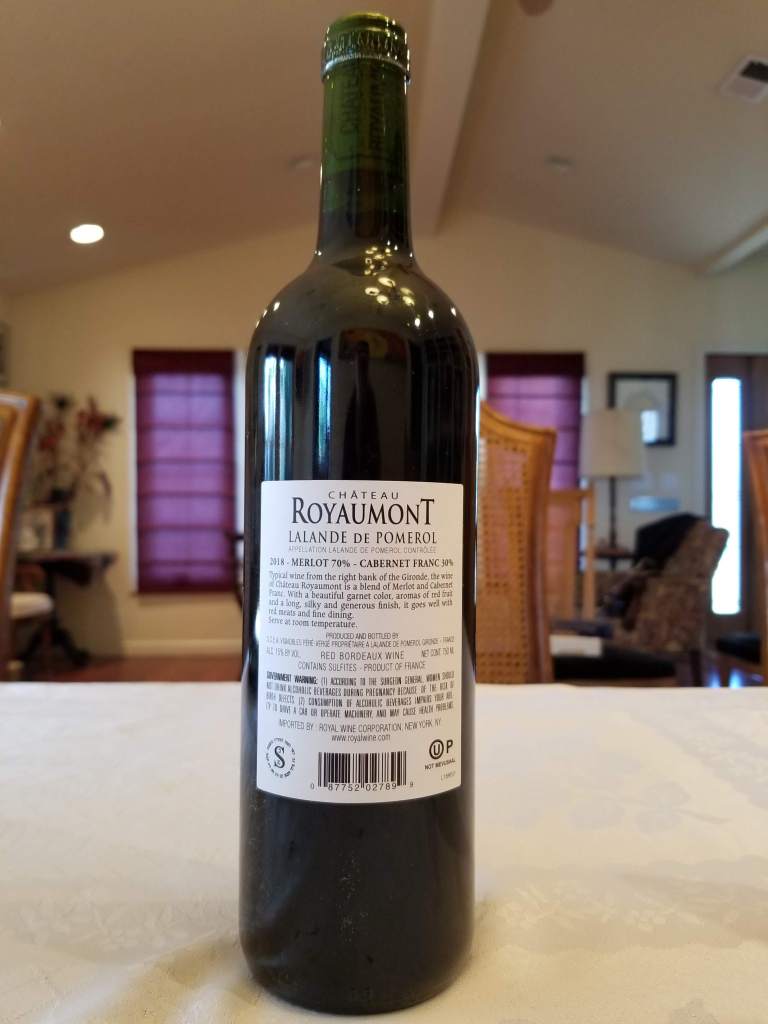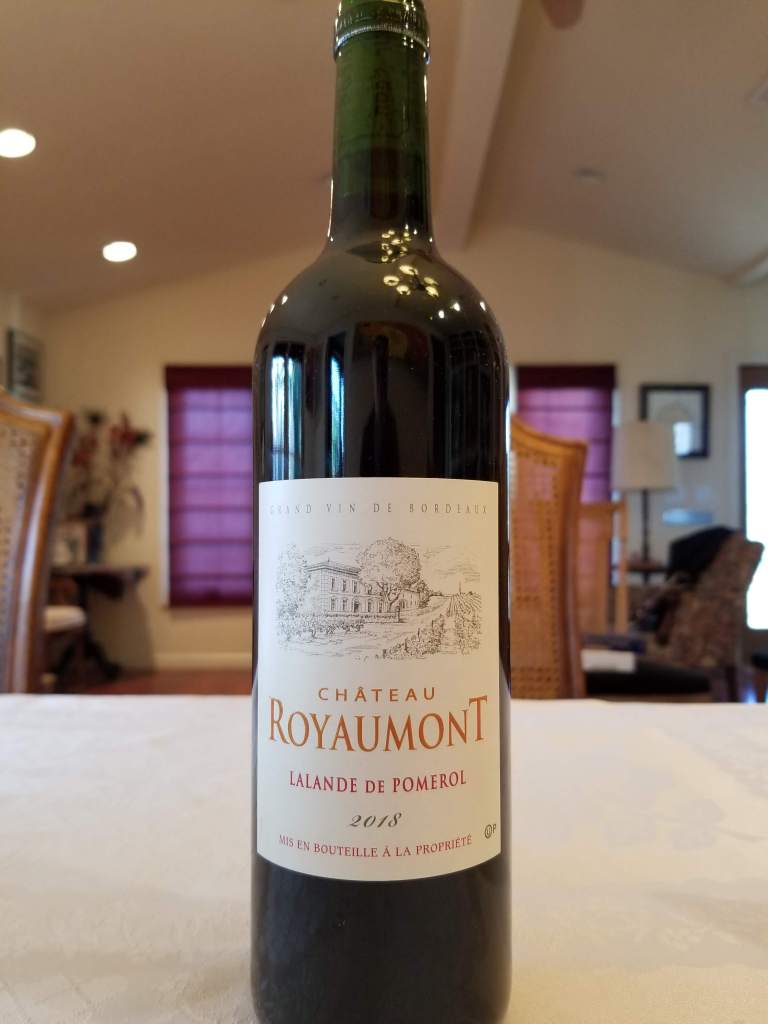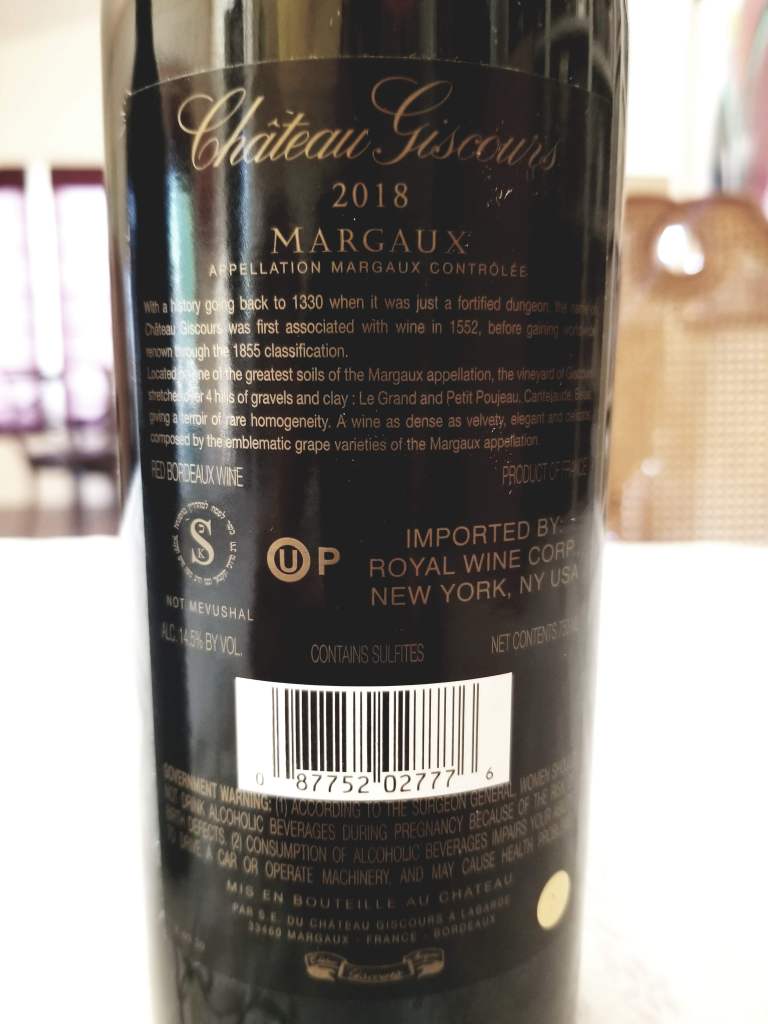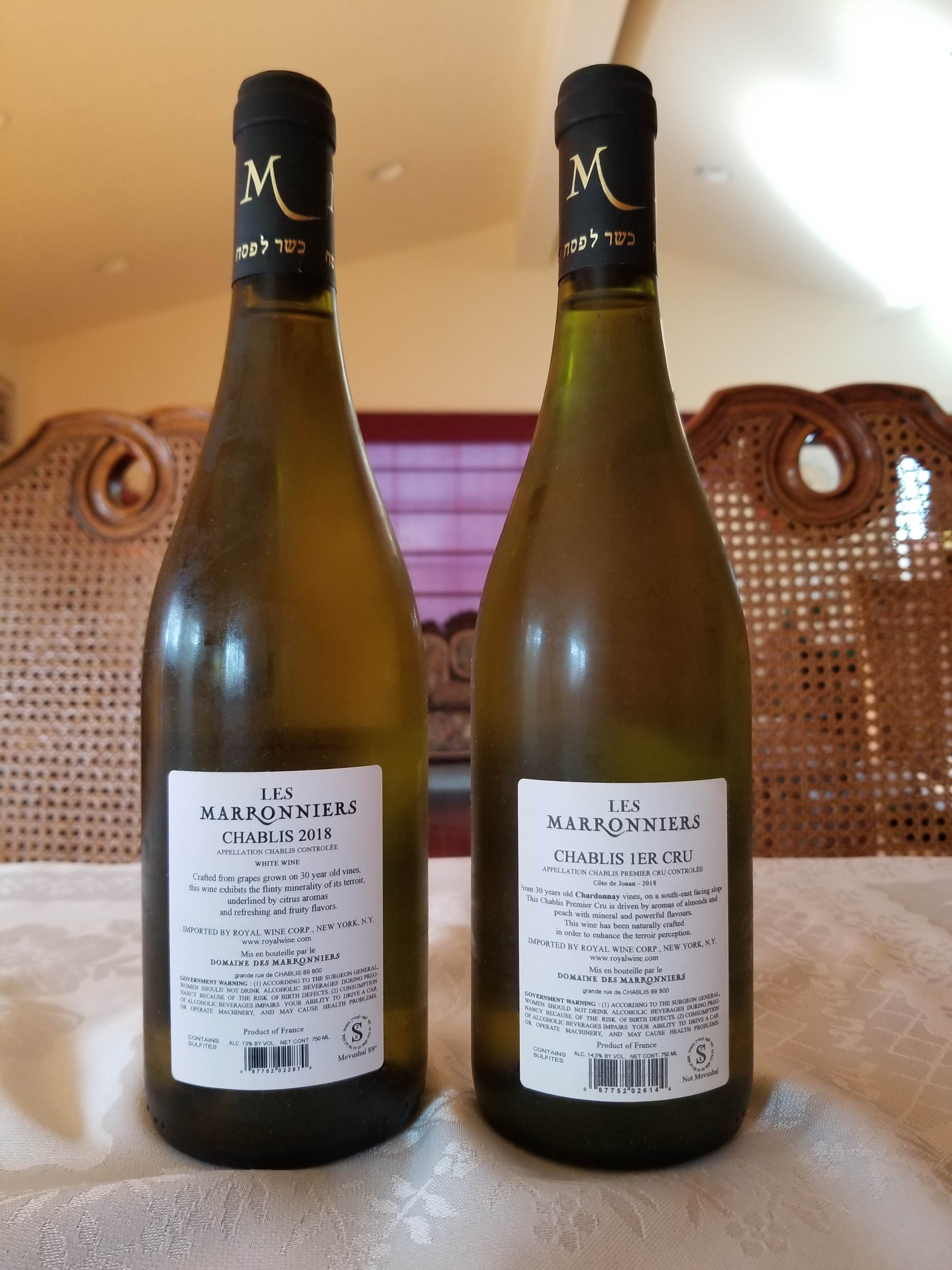Blog Archives
Hotel Wine tastings – the final tastings from my trip to Paris – May 2025
As stated in my previous post, I was in Paris in Late May, with Avi Davidowitz from Kosher Wine Unfiltered. This trip was not about numbers, but rather about sheer logistics. The number of boxes across the number of hotels was more than I wished for! Of course, this was totally self-inflicted, as Avi was coming in for business the week before, and I was juggling too much at home. In the end, it was a far more relaxing trip, as the sheer number of wines was more in the 40s than the usual 60 or 80 wines. A lot of that can be blamed on the number of 2024 or new 2023 wines on the market – there are just ZERO new wines out there. There are loads of old 2022 and 2023 roses in the stores in Paris, and the same can be said for older whites and reds. Wines are not moving, and as such, there was less new stuff to taste.
Two years ago, we had some 80 wines; this May, we were at 40+ wines. There were a few wines that Avi missed, and a few I wished he was able to see evolve, but that is the game as we know it!
The wines were tasted in classic region/style order: Rosés, whites, Wines from Spain and Italy, a single Burgundy, Bordeaux/Blend wines, and I think that is it.
Rose Wines
We had a total of 10 Roses, and there was just one 2024 Rose in the stores. The rest of the wines came from a combination of Mercier Wines, Capcanes Winery, Terra di Seta Winery, and Taieb wines. The hands-down best Rose I had so far this year is locked away in Paris, and that is the 2024 Château Sainte Roseline Lampe de Méduse – Cru Classé Rosé. This is the first time I have tasted this wine, and it was clean, controlled, and refreshing. That is a wine to BUY lots of for the summer.
I have often posted about Taieb wines, and if you want to read the whole background, read the first post I made here.
The 2024 Cave D’Esclans Whispering Angel and the 2024 Château Sainte Roseline Lampe de Méduse – Cru Classé Rosé are the two Rose WINNERS from the tasting. The 2024 Elvi Wines Vina Encina Rosado was a solid wine, along with the N.V. Summer Ice Rose.
White Wines
We tasted through a lot of white wines. One of them I brought from the USA for Avi to taste was the 2023 Alex Rubin Arinto. That is a wine that I posted about earlier and one that Avi loved as much as I did. The 2023 Chevalier De Marmorieres Blanc was a shocking WINNER find along with the always enjoyable Herenza White. I have no idea why the Herenza White doesn’t move well in the USA; I have no idea! Folks buy a few and try.
On a slight rant, I will start with the positives, thankfully, we have more kosher white wine available now than ever before, PERIOD! However, what is clear is that the kosher-buying public has made Sauvignon Blanc and Chardonnay their next Cabernet Sauvignon! I am happy you are all starting to enjoy white wines – finally! But good Lord, there are OTHER white wines out there! As stated, I am firmly on the ABC train, outside of a few Cali and France. Sauvignon Blanc is a wonderful grape and please ignore EVERYTHING that Avi says to the contrary, it is not his fault, he has issues with good wine!
Now, all I see is that white wines that are not Chardonnay or Sauvignon Blanc linger on physical or virtual shelves. Thankfully, most of you get Riesling, almost. But that is it! You guys killed the only good Albarino from Ramon Cardova because you all refused to buy it! The Herenza is the same, and this wine is 30 to 40 percent Sauvignon Blanc! OK, I’ll give up and stop my rant here! TRY OTHER white wines – please!
The rest of them are wines that you can try and see if you like.
Italian and Spanish Wines
Overall, the red wines were split between Italy/Spain and Burgundy/Bordeaux. However, the hands-down leader in QPR (Quality to Price Ratio) WINNER scores was Spain and Italy. Spain and Italy had 12 wines, and 7 of them won the QPR score of WINNER.
I must be honest here, I drove everyone crazy! Moises at ElviWines, Jurgen at Capcanes Wine Cellars, and Daniele at Terra di Seta. All of them were very kind to send us samples. The cool thing is, we got to taste Terra di Seta wines long before they appear on the USA shores, or at least before they are released for sale. The same can be said for Elvi Wines; we tasted yet unreleased wines here in the USA. Finally, the Capcanes wines may be released, but either way, they are solid. Our sincere thanks to all of them for taking the time and sharing their excellent work with us!
The seven QPR WINNERS were the
- 2022 Elvi Wines Adar
- 2022 Elvi Wines Herenza, Crianza
- 2023 Capcanes Peeraj Ha’abib
- 2021 Terra di Seta Chianti Classico, Riserva
- 2021 Terra Di Seta Guiduccio
- 2022 Elvi Wines El26
- 2019 Terra di Seta Chianti Classico, Assai, Gran Selezione (which Avi did not taste).
The 2022 EL26 was another stunning Grenache-based red wine, and I cannot say it enough, Elvi is crushing it over and over and over again! The Adar is a lovely Mevushal option that is not sold here in the USA, though it sells nicely in Israel. The 2022 Elvi Herenza Crianza is equally impressive.
Terra di Seta has once again released some lovely new wines, but they will not be available in the USA for a bit. The 2021 Terra di Seta Chianti Classico, Riserva is beautiful, along with the 2021 Terra Di Seta Guiduccio, which shows more refined than the 2020 Guido. Finally, the wine that Avi did not taste, the 2019 Terra di Seta Chianti Classico, Assai, Gran Selezione, is mind-blowing! Pure mushroom and soy sauce heaven.
A single Burgundy and Bordeaux Wines
As is familiar with our hotel wines, they open slowly and they are very hard to get a grip on until we are almost on a plane home. I have no idea why this is the case; it feels like it is the curse of the hotel, but we have stayed in different hotels, and the theme remains the same. Also, this phenomenon happens ONLY with Bordeaux wines. The rest of the red wines we taste and the whites open as we expect. The 2020 and 2021 Chateau Olivier Blanc are wines that took 6 days to come around. The 2023 Chateau de Rayne Vigneau Grand Vin Blanc Sec took 6 days to open! I have no idea, no explanation. I am not a chemist, and I am not going to speculate. What I will state is FACT! Wines we taste in the hotel room, for reasons unexplained, just take a LONG time to come around.
So, it was NO surprise when the main wines we were looking forward to tasting went silent for three days. The 2022 Château Angelus Carillon de l’Angélus was closed for four or more days. The 2022 Relais de La Dominique was literally red water for three days. The 2022 Chateau Haut Condissas Prestige was an open book from the start. The 2022 Château Tour Baladoz was closed for two or more days. The 2022 Chateau Haut Brisson may have been the WORST of the bunch – changing over four days from red water to a lovely wine. The 2022 Chateau du Courneau was there and available from the start! The 2022 Vieux Chateau Chambeau Reserve was as open as the time I had it in San Jose. I bought it to make sure that Avi tasted it.
The TRUE SHOCKER was the 2022 Chateau Rocher Gardat! Yes, you have a good memory. We tasted this wine back in 2024. However, my memory isn’t as good, so when I am walking around Paris, I buy what I see. Turns out it was indeed a wine we had tasted and given time to come around, and it never did. HOWEVER, this time, the wine was a shocking WINNER! It showed incredible acidity, pop, and fruit structure, and for the price, GOOD LORD, that is a clear WINNER for Bokobsa! The joy of a feeble mind when in Paris!
In case you were wondering there were four QPR WINNER wines. I will leave it up to you to guess, or you can look below. One of them should be STUPID obvious, the other two, not so much, but hey, that is the joy of wine!
The rest of the wines were average and available, but not exciting.
Where can you buy these wines?
The Taieb wines will find their way to the USA through a menagerie of importers. Those include Liquid Kosher, Kosher Wine, and Victor Wines, which I continue to be baffled at where these wines actually sell, outside of Florida! The Elvi wines are already available in the USA. The Capcanes Cellar wines are already here. The Terra di Seta wines are now available in the USA, but their release will be delayed until the current stock is depleted. Then you have the Mercier Wines, none of which are here, I think. The 2022 Chateau Haut Brisson, 2023 Chateau Angelus Tempo d’Angelus, and the 2022 Château Angelus Carillon de l’Angélus are either available in the USA or on their way; I’m not sure. I saw a bottle on social media, but we can’t be sure if it’s actually here or was brought in by hand.
The 2022 Vieux Chateau Chambeau Reserve is readily available in the USA,
The Mercier wines will find their way here once the previous vintages are sold. As for the rest of the wines, I have no idea!
As always, the 2022 Pavillon de Leoville Poyferre is the Non-Mevushal version of the wine, and is only available in France, the UK, and Israel. We bought it because we couldn’t get a tasting of it – sadly, it didn’t show any better than its Mevushal version.
I have no idea what is going on with all the 2022 Rollan de By wines. These were all made by Taieb, but for some reason, they are not being imported into the USA, and they are hard to find in France, as well. The Condissas is a clear WINNER, but that only helps if you can find it!
Thoughts on this tasting
OK, so overall, this tasting was great! This was better than previous tastings because the 2022 vintage has shown far better than I originally imagined, unlike other hotel wine tastings. Of the 40+ wines that we tasted, 31 of them garnered scores that would be acceptable to most people. That is a great showing! 31 of 40+ wines! Good stuff! Still, Kosher plonk exists in spades in all regions of the world! The USA may have the largest availability to them, but Paris is not far behind!
Regarding other wines from France that people will ask me about, the answer is that we tried. We sent out emails and received initial responses, but all subsequent follow-up emails were directed to the Spam Bucket. Sometimes, I wonder if French people hate us Americans! Anyway, the winning lineup is impressive and holds wines that you should be buying. I sure will! There are a couple of wines that were not in that picture, but the scores will make clear they deserved to be there. The issue was that one wine was not delivered until after Avi left, and the others improved after that time as well. So, like I said, these wines take time to come around.
Before I forget – Avi took all the pictures from this trip, so if you dislike them, blame him. If you love them, disregard the previous sentence! Thanks, buddy!! Thankfully, this time we got all the wine pictures!
Finally, 100% of the deliveries were to the hotel this time. I have essentially stopped bothering my man Ari Cohen, AKA El-Presidente of Bakus Wines. He has essentially become totally AWOL on our trips. I think the more I go to Paris, the less I get to see him – maybe I am finally becoming a Parisian! Thanks for all the help, as always, buddy!
The wine notes follow below in the order that they were tasted. The explanation of my “scores” can be found here and the explanation for QPR scores can be found here:
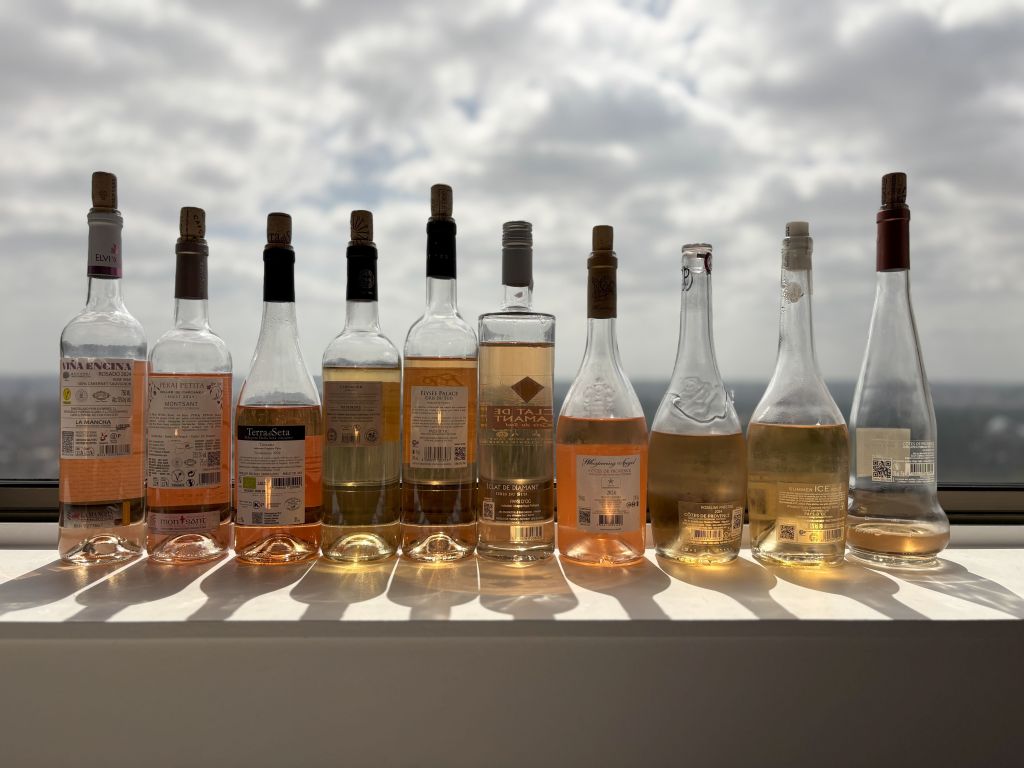
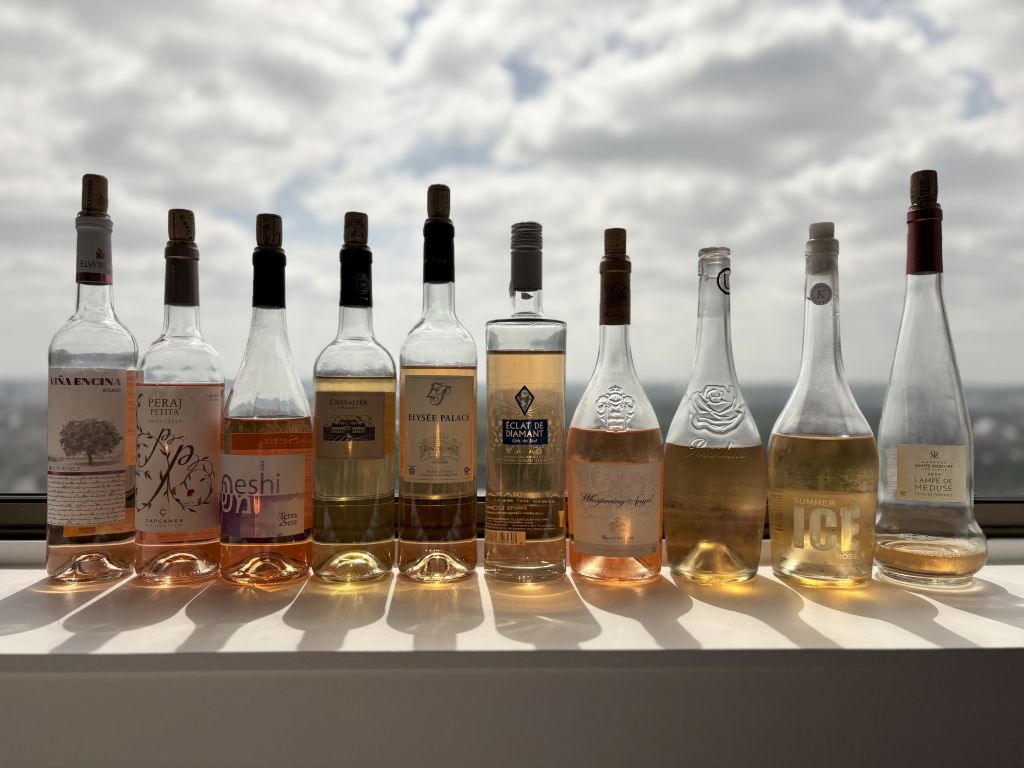
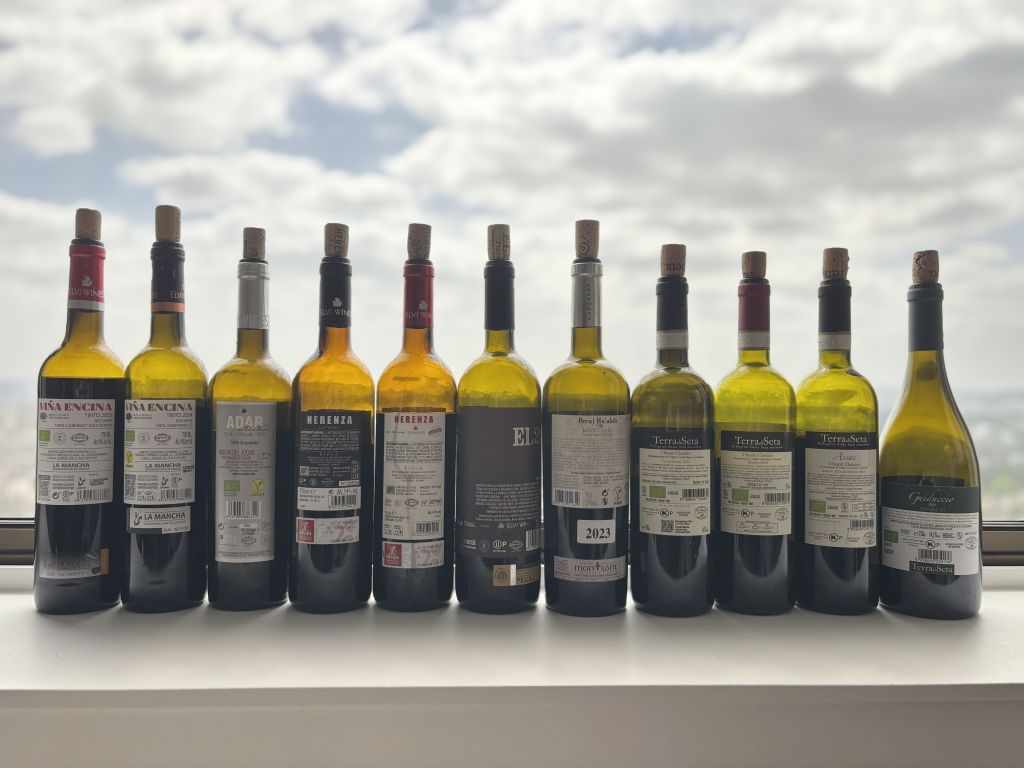
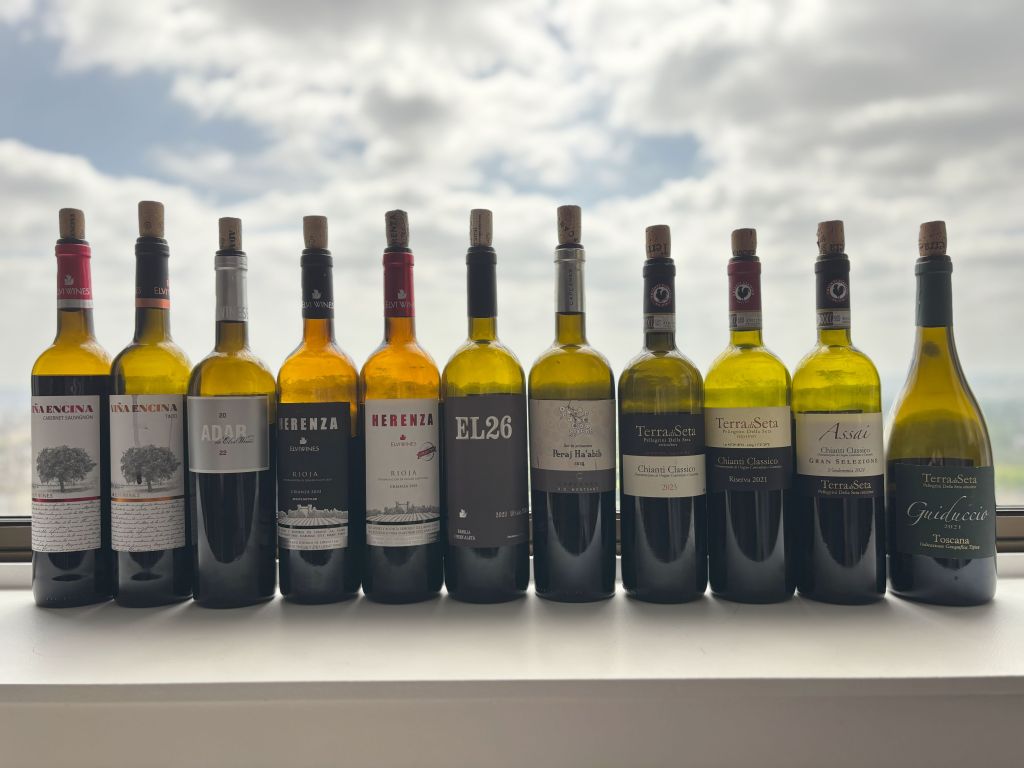
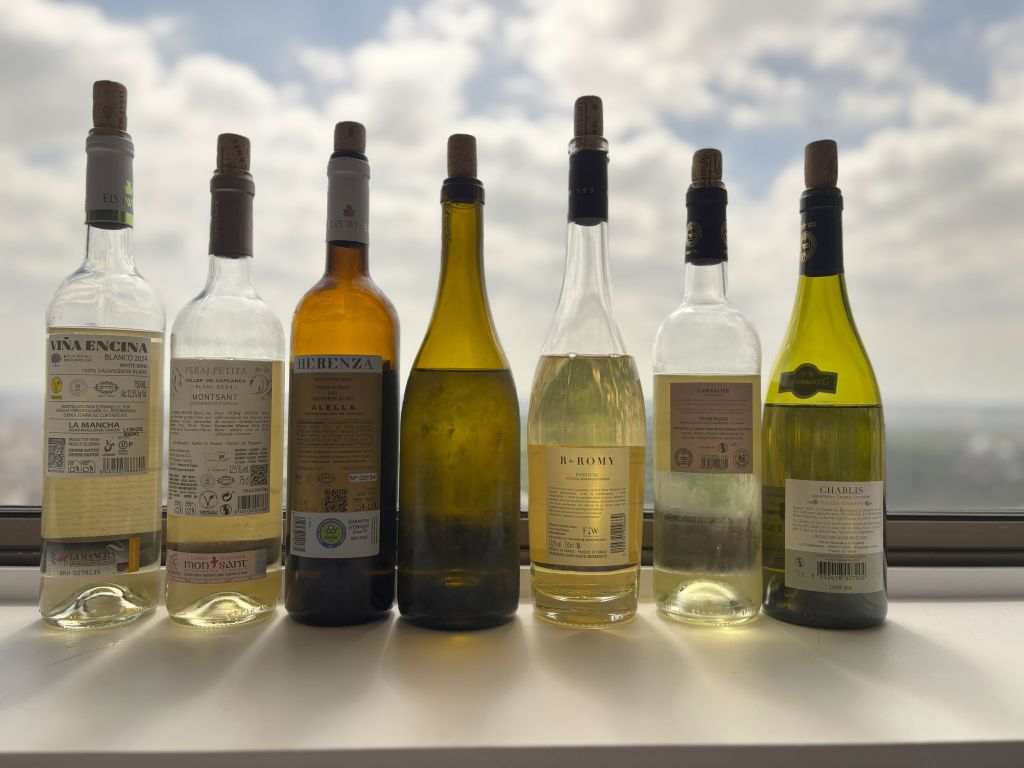
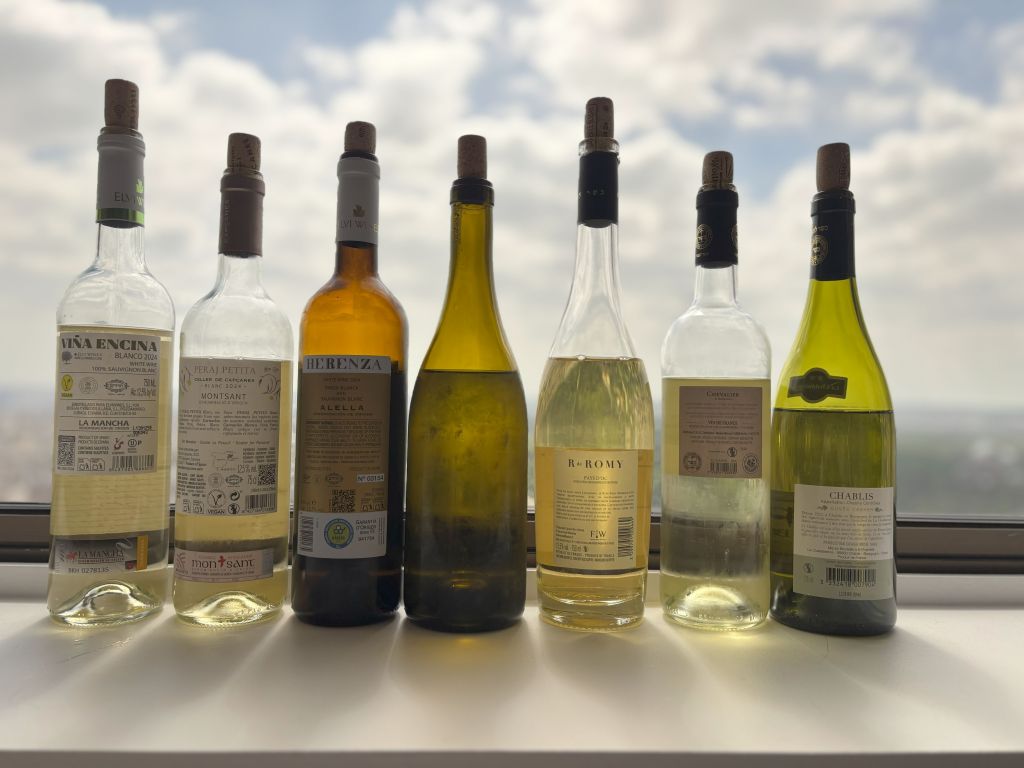
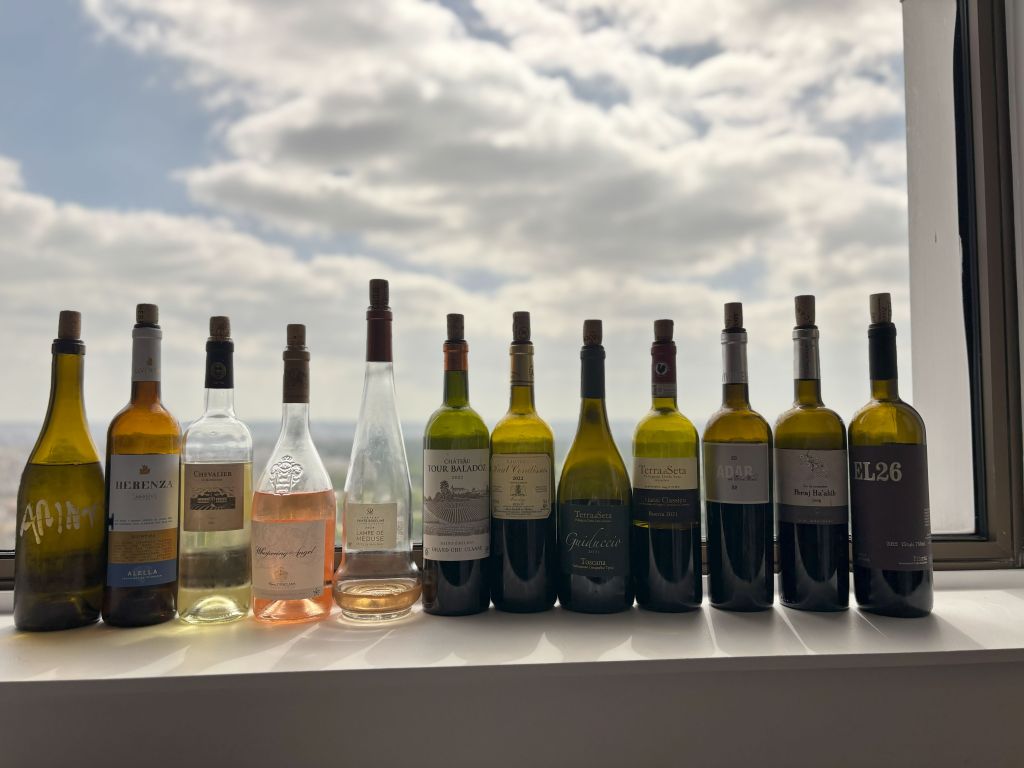
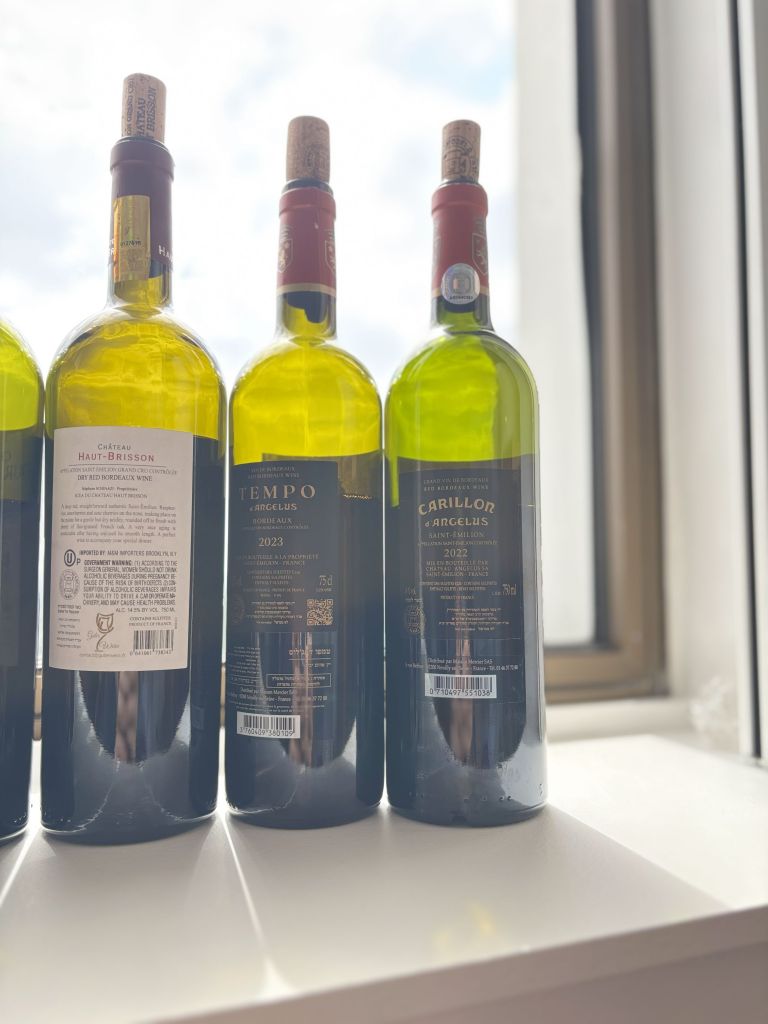
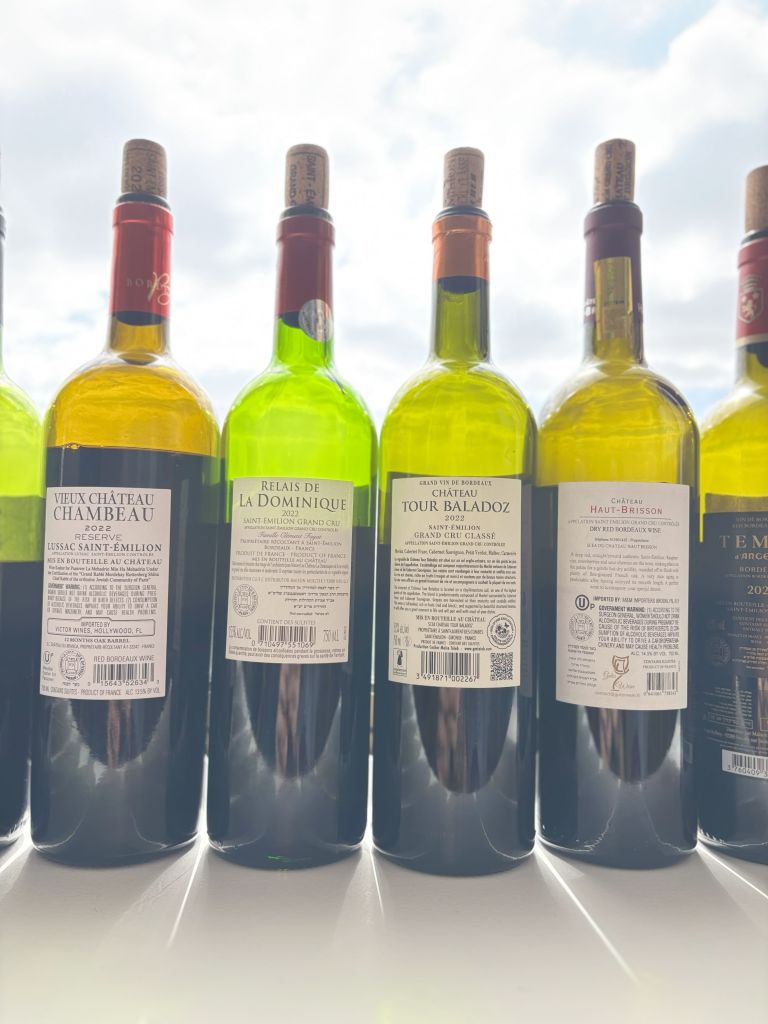
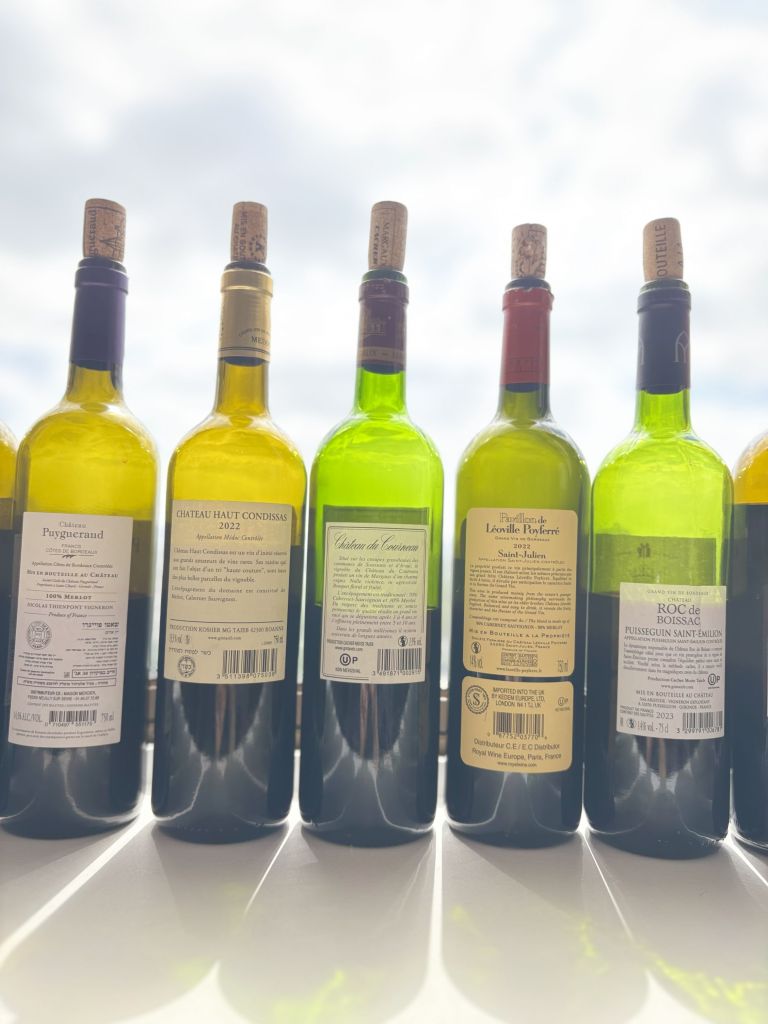
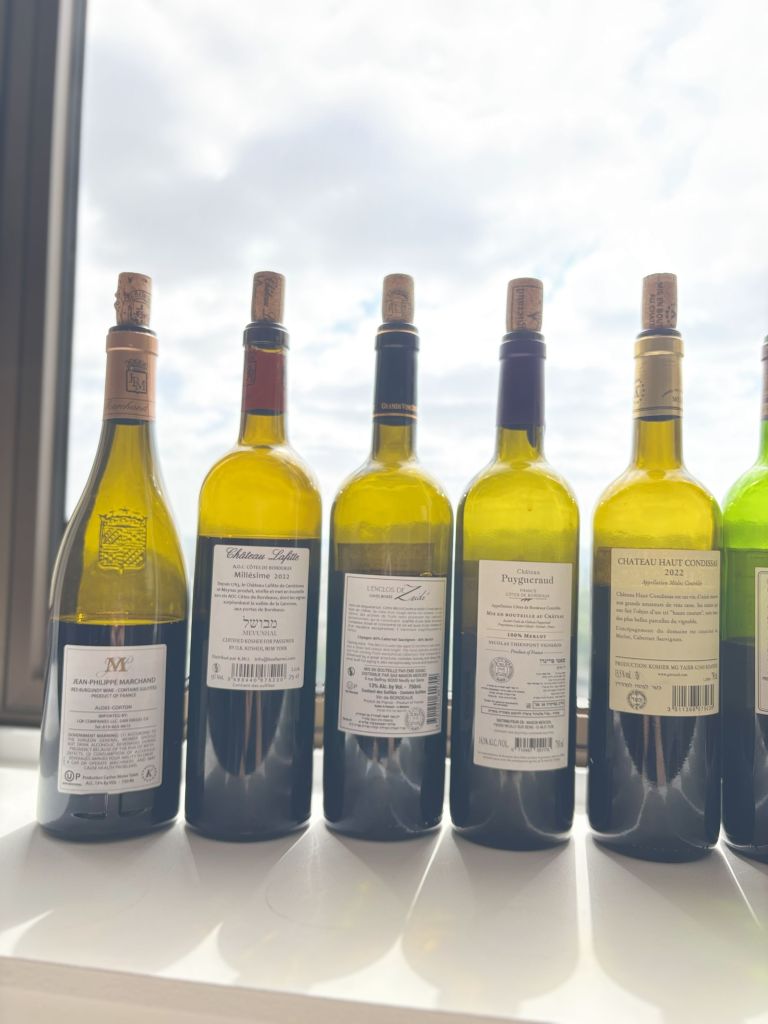
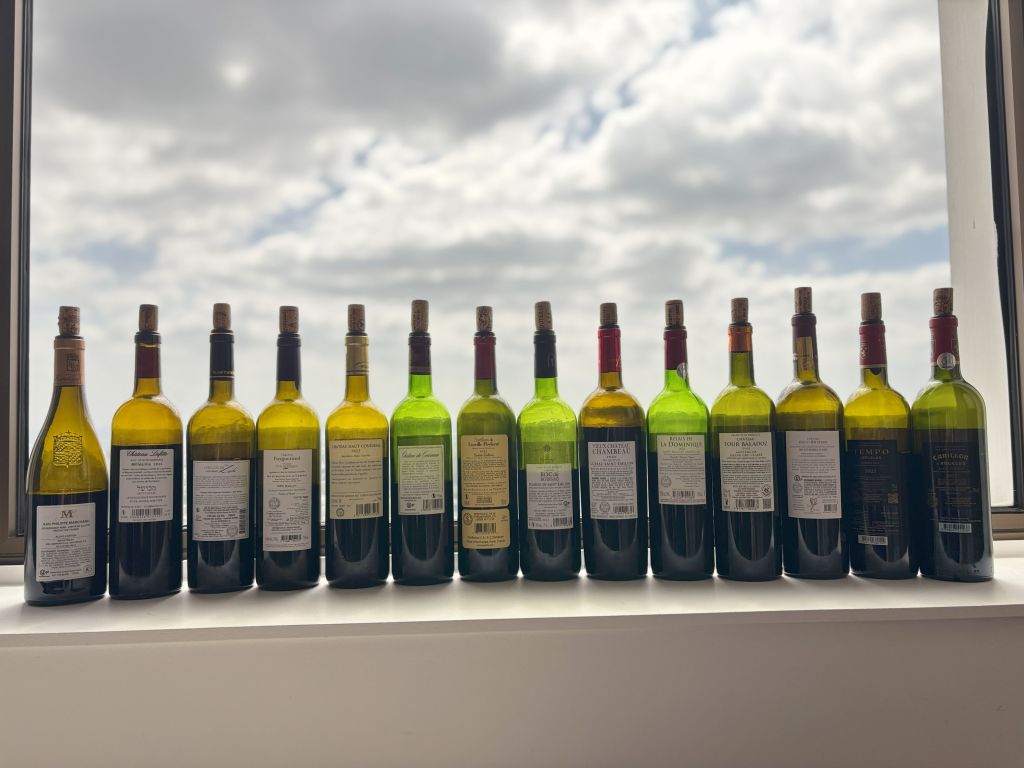
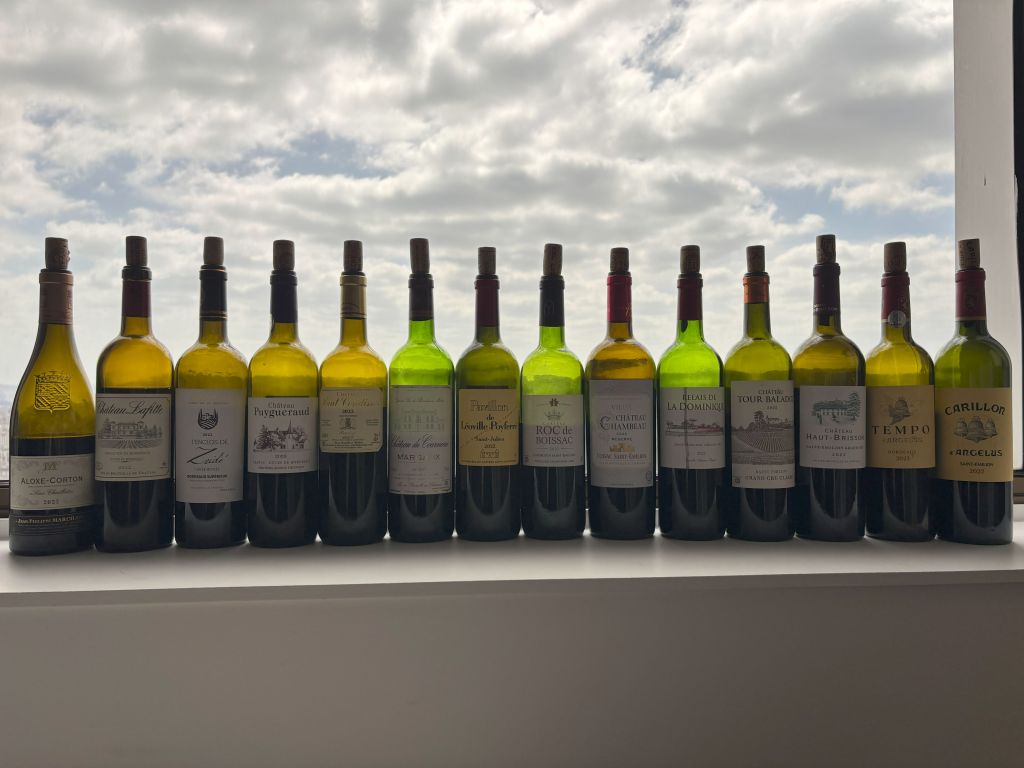
2023 Jean-Philippe Marchand Aloxe Corton, Sous Chaillots, Aloxe Corton – Score: 92 (QPR: WINNER)
The nose of this wine is solid, with pomegranate, dried cranberry, plum, cherry, rich smoke, roasted herbs, minerality, and red floral notes. The mouth of this medium-plus-bodied wine is lovely; it is ripe, not candied, more like a Pommard or Volnay, with incredible acidity, nice balance, along with layers of ripe and juicy pomegranate, dried cranberry, tart and juicy Bing cherry, all wrapped in mouth-draping tannin, rich smoke, and lovely roasted herbs. The acidity, juicy fruit, and smoke take center stage. Bravo! The finish is long, ripe, balanced with smoke, ripe, tart, and juicy fruit, with floral notes, and bitter mint flavor. Bravo! Drink by 2030, maybe longer; it feels missing in the tannin. (tasted May 2025) (in Paris, France) (ABV = 13%)
2024 Elvi Wines Vina Encina Tinto, La Mancha (M) – Score: 82 (QPR: EVEN)
The nose of this wine is a bit too ripe and shows more like a Beaujolais than a Tempranillo. Showing candied lifesaver and blue fruit. The mouth of this light-bodied wine is ripe, candied, without the acidity it needs, but it has fruit that is candied and is a bit green as well. Drink by 2025. (tasted May 2025) (in Paris, France) (ABV = 14%)
2022 Elvi Wines Adar, Ribera del Jucar (M) – Score: 91 (QPR: WINNER)
The nose of this wine is ripe, but more controlled than previous vintages, with nice minerality, smoke, soy sauce, and roasted meat aromas. The mouth of this medium-plus-bodied wine is ripe, and the acidity is great, with notes of soy sauce, sweet oak, blackberry, plum, nice graphite, soft tannin, and roasted herb. The finish is long, ripe, and candied, yet balanced with acidity, featuring notes of charcoal, sweet vanilla, roasted meat, and soy sauce. Drink by 2027. (tasted May 2025) (in Paris, France) (ABV = 13%)
2022 Elvi Wines Herenza, Crianza, Rioja – Score: 91 (QPR: WINNER)
The nose of this wine is nice, showing good acidity, pop, tart fruit, loads of smoke, intense sweet dill, hickory, ripe fruit, nice coffee, and umami. The mouth of this full-bodied wine is lovely. There is nice sweet oak, but the wine is balanced, with great acidity and smoke. At first, it is closed, but with time, it reveals blackberry, plum, and dark cherry flavors, along with a smooth mouthfeel, fine tannin, and lingering smoke. The finish is long, ripe, and balanced, with more sweet oak, intense sweet dill, lovely vanilla, and deep loam. Nice!! Drink by 2028. I think this vintage will not last as long. (tasted May 2025) (in Paris, France) (ABV = 14%)
2023 Capcanes Peraj Ha’abib, Montsant – Score: 92 (QPR: WINNER)
This is a return to what I liked about Peraj Ha’abib in the past: smoky, dirty, earthy, charcoal, and tar-driven wine, with nice red and blue fruit. The mouth of this medium-plus-bodied wine, with ripe blackberry, plum, juicy boysenberry, smoke, tar, charcoal, intense tannin, and layers of fruit that come at you, and yet you are almost refreshed – an intense experience that has the bracing acidity to pull it all off. The finish is long, spicy, with smoke, cloves, vanilla, cinnamon, and more tar and charcoal. Bravo! Drink until 2030. (tasted May 2025) (in Paris, France) (ABV = 15%)
The Top 24 QPR Kosher Wine WINNERS of 2022
In May 2020 I wanted to drive home the need for QPR (Quality to Price Ratio) wines. So I set out to create what I thought a QPR metric should be! Gone were arbitrary price ranges and such. Instead, I let the market define what the QPR price range should be. I did this by grouping the wines by their type (white, red, rose, sparkling, and dessert) and then further refined the grouping by ageability within the white and red wines. This gave me the following groups:
- Drink “soon” White Wine (Simple whites)
- Rose Wine (always drink soon)
- Drink “soon” Red Wine (Simple reds)
- Mid-range aging Reds (4 to 11 years)
- High-end Red wines (11 and more years)
- High-end White wines (7 and more years)
- Sparkling Wine (No need here for extra differentiation)
- Dessert Wine
I then made the mistake of trying to create an Orange wine range/group – that was a HUGE mistake. Again, the wines themselves were not the issue, the issue revolved around trying to group such a small sample set into its group. They will go into their respective white wine category, next year.
Throughout the year, I posted many QPR posts, for almost all of the main categories. I will continue down this road until I find a better way to categorize and track wines that are QPR WINNERS. Talk about WINNERS, that secondary QPR score was a 2.1 revision to my QPR scoring, and that is explained in this post. All the wines listed here are QPR WINNERS from my tastings in 2022.
Let us discuss the approach
I have heard from a few of you. I do not understand your QPR (Quality to Price Ratio) scoring. So, let us take another shot at this! Every time a customer comes into a shop or goes online to buy kosher wine they have a choice of a few thousand wines, online, or many hundreds in a store. The question is how does a buyer differentiate one wine from the next?
If they like Terra di Seta wines, as I do, and it costs 30 dollars then he/she will compare other wines to that wine, in regards to the wine and the price. That is the same for any wine they like and any wine they are looking at buying. Price matters! Now, the real question is how can you compare two wines to each other? Any two wines in the world of kosher wines? What characteristics can you use to compare them?
Let us say they like the 2018 Elvi Wines Clos Mesorah, the 2022 wine of the year (AKA best-priced QPR wine). It is a red wine from Montsant, Spain. OK, what other wine can you compare with it? You can compare other Montsant kosher wines, like the Cellar Capcanes wines. However, the Cellar Capcanes wines have an issue – they have been poor for many years! As the ratio states it is QUALITY to price! Quality is primary; once you have a good wine, you can attempt to compare it with similarly good wines.
OK, so we need equal or comparably equal quality and that is it??? So, let us say there exists a rose from Montsant that scores the same quality score as Clos Mesorah are they comparable? What about a white wine – same? Can/should compare them? I will tell you that no one would act in such a manner. People will compare items. OK, so are we then forced to compare Montsant wines with Montsant wines – again I will tell you no! People will compare like-scored red wines with like-scored red wines.
OK, but what is “like” – that is the body of work that my QPR approach works to answer. If you agree that people will attempt to compare items that are similar in nature but not locale, region, or price, what is that characteristic that they will use to compare two arbitrary kosher wines? Price IS NOT the answer.
So, let us recap – we have two similarly scored wines (AKA quality) but they are very different in many ways. Let us look at three of the wines below, two of which are from the greater Medoc region:
- 2020 Chateau Clarke, Baron Edmond de Rothschild, Listrac-Medoc – Score: 92.5 (QPR: WINNER)
Drink from 2025 until 2032. (tasted November 2022) (in Paris, France) (ABV = 13.5%) - 2020 Chateau Fourcas Dupre, Listrac – Medoc – Score: 92.5 (QPR: WINNER)
Drink from 2024 until 2035. (tasted November 2022) (in Paris, France) (ABV = 12.5%) - 2019 Chateau Royaumont, Lalande de Pomerol – Score: 92.5 (QPR: WINNER)
Drink from 2024 until 2032. (tasted December 2022) (in San Jose, CA) (ABV = 15%)
These wine price from 38 dollars to 55 dollars. The question you need to ask is are they comparable? I would state they are and I would further state that wine buyers compare them every time they read my lists and other lists that like these wines. Again, the primary requirement is quality – and these all scored the same quality score.
So, next, would you at least compare two Listrac-Medoc wines to each other? The Chateau Fourcas Dupre and the Chateau Clarke? I would say yes for sure. Well, why is the Royaumont any different? They are very different wines, of course, but in the end, what do oenophiles buy such wines for?? To store them and share them at a later date, meaning that wine buyers classify wines by regions but ultimately they classify them by their ability to age gracefully or not! Meaning some wines age beautifully and many are good to enjoy in the coming years.
So, now you see the logic to the categories I use to compare wines – this is the list once again:
- Drink “soon” White Wine (Simple whites)
- Rose Wine (always drink soon)
- Drink “soon” Red Wine (Simple reds)
- Mid-range aging Reds (4 to 11 years)
- High-end Red wines (11 and more years)
- High-end White wines (7 and more years)
- Sparkling Wine (No need here for extra differentiation)
- Dessert Wine
Essentially, ignoring sparkling, rose, and dessert wines, there is white wine and red wine. Each of those two major categories is broken into their age-ability. Red wines have three age ranges while white wine has two. Then there are the other three aforementioned groups, rose, sparkling, and dessert wines.
Once you have scored a wine – IRRELEVANT to the price – this is KEY you are then required to place that wine into one of the 8 categories listed above. Once you have done that any wine in that category is available for comparison. Using the median approach wines are stacked and ranked by their price, within that category, and some rise above others, by having an equal or better quality for a lower or equal price. Please read more about this here and here.
The Summary
This year, the list came to a total of 24 names, and none had to dip below 92+ in the scores, which is a large number and better scores overall than last year, but again, the pool from where they are culled continues to grow, and the diamonds in the rough are getting harder and harder to find. There are 24 or so WINNER that scored 92+ this year but not in a single area.
Like last year, we return with QPR for France, the prices for many wines there, are dirt cheap! There is also QPR for the USA, which is the default. Finally, some wines are QPR here in the USA but not in France.
Of course, the first wine on the list is the 2022 Wine of the year! Elvi Wines is a perennial producer of QPR WINNER wines and a most deserving winner of the 2021 Winery of the year!
Maybe, Avi Davidowitz, from kosher wine unfiltered, can create a list like that for Israel, this year, a bunch of wines became available there, and a proper QPR list would be worthwhile!
The wines on the list this year are all available here in the USA, and in Europe, and a few can be found in Israel, as well. The wine notes follow below – the explanation of my “scores” can be found here and the explanation for QPR scores can be found here:
2018 Clos Mesorah, Montsant – Score: 94 (QPR: WINNER)
The nose of this wine shows more black fruit than the 2019 vintage, with lovely blackberry, smoke, root beer, and roasted animal, more than 2019, with some red fruit, a bit bluer, with white and pink flowers that emerge after time, raspberry, and mineral. The mouth on this full-bodied wine is rich, layered, elegant, and a bit riper than 2019, with rich salinity, sweet oak, black olives, blackberry, plum, boysenberry, root beer, dark currants, anise, and rich mouthfeel and fruit structure, that gives way to saline, roasted herbs, and graphite. The finish is long, dark, brooding, smoky, earthy, forest floor, and blackcurrants, with dirt, loam, clay, leather, and rich spices. Bravo!! Drink from 2027 until 2036. (tasted November 2021) (in Montsant, Spain) (ABV = 15.5%)
2020 Château Olivier Grand Cru Classe, Pessac-Léognan – Score: 94 (QPR: WINNER (France), GOOD (USA))
The nose of this wine is quite nice, a wine I would drink, with a bit of soy sauce, rich salinity, mushroom, earthy, and dirty, like a rich and redolent mud pen, with a bit of heat, and lovely smoke. With time, the heat drops off, ripe, muddy, mushroom haven, lovely! The mouth of the full-bodied wine is dense, layered, rich, and concentrated, with rich extraction, dark and brooding, with juicy blackberry, ripe strawberry, mushroom, forest floor, wet leaves, rich salinity, soy sauce, umami, just a fun, ripe, savory, and dirty wine. The finish is long, dark, and brooding, but well controlled, one of those rare ripe/dirty/earthy controlled monsters, with dense minerality, scraping graphite, ripe fruit, and leather, Bravo! Drink until 2035. (tasted November 2022) (in Paris, France) (ABV = 14.5%)
2019 Chateau Tour Seran, Medoc – Score: 94 (QPR: WINNER (France))
This is one of the best wines of our blind tastings here in the hotel. The nose of this wine is lovely, and perfectly balanced, with licorice, smoke, black and red fruit, char, toasty oak, loam, lovely mushroom (that comes out after a few hours), and forest floor. The mouth of this full-bodied wine is dense, ripe, layered, and rich with good acidity, richly extracted, but savory, not overly ripe, a real joy, with blackberry, ripe raspberry, currants, dense loam, forest floor, with scraping minerality, graphite, tar, and rock, this is too much fun! The finish is long, and mineral-driven, with good fruit focus, great graphite, and rock. Drink until 2036. (tasted November 2022) (in Paris, France) (ABV = 14%)
2019 Clos Mesorah, Montsant – Score: 93.5 (QPR: WINNER)
This wine is beautiful with lovely floral notes of rosehip, violet, tisane tea, and red and blue fruit, with roasted herb, smoke, roasted animal, rhubarb, dried cherry, and lovely forest floor notes. The mouth on this medium-plus bodied wine is lovely with screaming acidity, lovely dark raspberry, plum, tart currant, mouth-draping tannin, rhubarb, dark cherry, with lovely green notes, rich saline, mineral, spice, roasted herb, lovely blackberry, smoke, and rich graphite. The finish is long, green ripe, blackberry, with saline, smoke, blueberry, leather, cloves, cinnamon, and sweet oak, bravo!!! Drink from 2026 until 2034. (tasted November 2021) (in Montsant, Spain) (ABV = 15.5%)
2020 Chateau Lafon-Rochet, Saint-Estephe – Score: 93.5 (QPR: WINNER (FRANCE), USA(EVEN))
This wine is a blend of 55% Cabernet Sauvignon & 45% Merlot.
The nose of this wine is a less ripe wine, with savory notes, lovely green and red fruit, elegant redolence, minerality, lovely iron shavings graphite, beautiful pencil shavings, with incredible raspberry, cherry, and rich smoke. The mouth of this medium-bodied wine is lovely, elegant, extracted, rich, and beautiful with ripe and juicy cherry, elegant tart/juicy raspberry, beautiful smoke, intense and elegant charcoal/graphite, just lovely, with red fruit, loam, and mouth-scraping tannin. The finish is long, red, ripe, and smoky, with great tobacco, rosemary, savory notes, dark chocolate, loam, leather, and lovely smoke. Drink from 2023 until 2033. (tasted November 2022) (in Paris, France) (ABV = 13%)
2016 ElviWines Herenza Rioja, Reserva, Rioja – Score: 93.5 (QPR: WINNER)
This is what I crave in wine – balance, complexity, elegance, and all bottled for a price that makes it a WINNER! The nose of this wine is beautiful, balanced, complex, and lighter than 2014, but still bold, rich, and expressive, soy sauce, umami, rich mushroom, loam, spices, blue and red fruit, and sweet anise, lovely! The mouth on this medium-bodied wine is not as bold as the 2014 and it starts a bit ripe, with time the wine opens to show balance, dark blueberry, plum, candied/spiced raspberry, and rich sweet spices give way to a mouth-draping elegance, sweet tannin, plush mouthfeel, and rich loam, clay, and earth, beautiful. The finish is long, and balanced, with leather, sweet tobacco, root beer, sweet baking spices, cloves, cinnamon, sweet cedar, dark chocolate, and rich searing acidity that brings this wine altogether. Bravo!! Another smash! Drink from 2024 until 2032. (tasted November 2021) (in Montsant, Spain) (ABV = 14.5%)
My top 25 kosher wines of 2020 including Wine of the Year, Winery of the Year, and the best Wine of the Year awards
Like last year, I wanted to make this post short and sweet – so the criteria are simple. I could care less about price, color, or where it was made. All that matters is that it is/was available this year sometime to the public at large and that I tasted it in a reliable environment, not just at a tasting, and that it was scored a 92 or higher. Also, there are a few lower scoring wines here because of their uniqueness or really good QPR.
We are returning with the “wine of the year”, “best wine of the year” along with categories I added last year, “Winery of the Year”, “Best White wine of the year”. Wine of the year goes to a wine that distinguished itself in ways that are beyond the normal. It needs to be a wine that is easily available, incredible in style and flavor, and it needs to be reasonable in price. It may be the QPR wine of the year or sometimes it will be a wine that so distinguished itself for other reasons. The wines of the year are a type of wine that is severely unappreciated, though ones that have had a crazy renaissance, over the past two years. The Best Wine of the year goes to a wine well worthy of the title.
This past year, I think I am pretty sure about my state on kosher wine overall. In the past, I had not yet tasted the pape Clement or other such wines. However, over the past year, those have been covered, and they were a serious letdown. As stated in the article, I truly believe the entire kosher production of the Megrez wines, following the EPIC 2014 vintage of the Pape Clement and others, to be below quality and seriously overpriced, and without value in every category, which is a true shame. The 2015 reds are all poor quality and the whites are not much better, in 2015 and 2016. The 2016 Pape Clement, while better, is a total ripoff for what it is. As I will talk about in my year in review post, 2014 will come out as the best vintage for the past decade in France. That is a hotly debated subject, but IMHO, in the world of kosher wine, there were FAR more best wine options in the 2014 vintage than any other vintage in the past decade. That may not be the case for non-kosher wines, but news flash, I do not drink non-kosher wines, or even taste them, and further this blog is about kosher wines. The 2018 vintage may well have some serious “best wine of the year” candidates, but sadly, not all of those wines are here and I could not travel to France to taste them all, as I do commonly.
There are also interesting wines below the wines of the year, think of them as runner-up wines of the year. There will be no rose wines on the list this year. If last year, I thought the roses were pure junk, this year, you can add another nail in the coffin of rose wines, IMHO. Thankfully, the task of culling the bounty of great wines to come to these top wines was more a task of removing then adding. We are blessed with a bounty of good wines – just not like a few years ago when that bounty included many 95 and 95+ scoring wines.
The supreme bounty comes from the fact that Royal released the 2018 French wines a bit early! Throw in the incredible number of kosher European wines that are coming to the USA and being sold in Europe and this was truly a year of bounty for European kosher wines.
Now, separately, I love red wines, but white wines – done correctly, are a whole other story! Sadly, in regards to whites, we had no new wines from Germany, still. Thankfully, we have some awesome new entries, from the 2017 and 2018 Dampt Freres Chablis, both Grand Cru and Premier Cru, and the new 2019 Meursault!
The wines on the list this year are all available here in the USA, in Europe, and a few can be found in Israel, as well.
Finally, some of these wines are hard to find and they may have different siblings – but they are worth the effort. The wine notes follow below – the explanation of my “scores” can be found here:
The 2020 kosher wine of the year – is a return to its greatness – the 2018 Elvi Wines EL26
Elvi EL26 is back! Back to the glory days and I have stocked up and sadly, it will sell out quickly, if it is not already sold out! Get a move on, there was not a huge production of this beauty!
So, why did EL26 win? Simple, it is a great wine, and then throw in its WINNER price, and this wine punches at two levels, at the same time! You can read more about this fantastic wine here, in my post about it. Enjoy!
2018 Elvi Wines EL26, Elite, Priorat – Score: 93 (QPR: WINNER)
This wine is a blend of 80% Garnacha (Grenache) and 20% Carignan. This wine is pure heaven, dirt, smoke, roasted animal, saline, mineral, juicy tart red, and blue fruit, with incredible precision and fruit focus – Bravo!
The nose on this wine is pure fun, showing tart red fruit, incredible fresh loam, and dirt, hints of mushroom, licorice, roasted animal, a whiff of oak, sage, rosemary, with dirt, and green notes. This wine is currently far more Bordeaux in style than that of a Spanish Priorat! The mouth on this medium-bodied wine is not overly extracted, but it is well extracted, with good mouth and fruit texture, with incredible acid, good fruit focus, showing dark cherry, plum, ripe and tart raspberry, strawberry, oak, vanilla, and garrigue, with green notes, and lovely mouth-draping tannin. The finish is long, green, yet ripe, with great control and precision, with lovely graphite, more roasted meat, scraping minerality, saline, rich smoking tobacco, and smoke, lots of char and smoke. Bravo! With time the wine opens more and shows its riper side, still very controlled, but the fun red and blue fruit become a bit fuller and richer in the mouth – quite an impressive wine! Drink from 2026 until 2036. (tasted December 2020)








